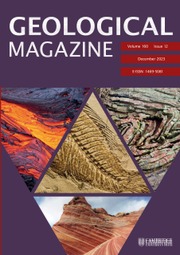Article contents
II.—An Investigation of some Wealden Sands
Published online by Cambridge University Press: 01 May 2009
Extract
The sands which are the subject of this investigation were taken from various parts of the Wealden area, and from different horizons, though all, except the French ones, are below the Weald Clay and represent the lowest division of the Cretaceous rocks, that is, the Hastings Beds.
- Type
- Original Articles
- Information
- Copyright
- Copyright © Cambridge University Press 1916
References
page 299 note 1 ProfessorBonney, , “Pebbles in the Trias”: Geol. Mag., Dec. IV, Vol. II, 1895Google Scholar.
page 300 note 1 Dr.Thomas, H. H., “Petrography of the New Red Sandstone”: Q.J.G.S., 1909CrossRefGoogle Scholar.
page 300 note 2 Topley, W. E., The Weald (Survey Memoir), p. 84Google Scholar.
page 300 note 3 These slides were kindly placed at my disposal by Dr. C. A. Raisin at Bedford College.
page 301 note 1 Lamplugh, G. W., Mesozoic Rocks in Coal Explorations in Kent, p. 19Google Scholar.
- 9
- Cited by




